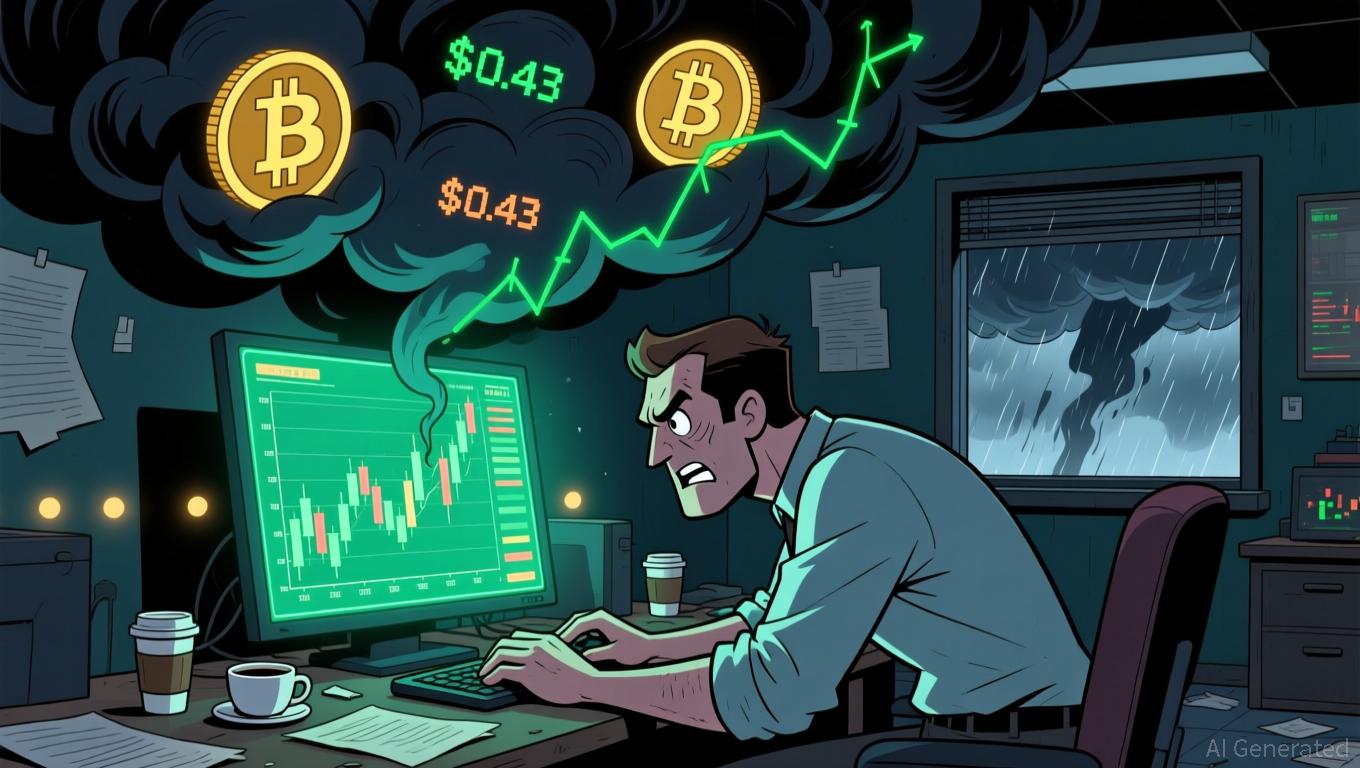Hyperliquid (HYPE) Price Rally: A Tactical Move Amidst DeFi’s Changing Market Dynamics
- Hyperliquid's HYPE token surged to $60 in late 2025 driven by protocol upgrades, capital efficiency, and CLOB-driven market dominance. - Dual-layer HyperEVM/HyperCore infrastructure enabled 73% decentralized perpetuals market share with 0.02%-0.04% trading fees. - HLP program's TVL grew from $400M to $5B by 2025, offering 11% annualized returns to liquidity providers. - CLOB model outperformed AMMs with $15B+ open interest and $3T+ trading volume, bridging DeFi and CEX performance gaps. - DAT treasury an
Protocol Upgrades and Infrastructure: The Foundation of Growth
Hyperliquid’s technological progress in 2025 has been central to its rapid growth. The introduction of HyperEVM in February 2025, an EVM-compatible layer, alongside the existing HyperCore execution layer, enabled the platform to handle hundreds of thousands of transactions per second while upholding decentralization principles

The Hyperliquidity Provider (HLP) initiative, which aggregates
Capital Efficiency and Market Structure: A CLOB-Driven Edge
Hyperliquid’s use of a central limit order book (CLOB) sets it apart from competitors. Unlike conventional automated market makers (AMMs), CLOBs allow liquidity to cluster near market prices, narrowing spreads and improving trade execution. This approach enabled Hyperliquid to capture 73% of the decentralized perpetuals market by mid-2025,
The CLOB’s transparency and rapid execution—made possible by Hyperliquid’s proprietary Layer 1 blockchain—have drawn both individual and institutional traders. By quickly listing new assets (such as the
Expert Commentary and Institutional Adoption: Validating the Bull Case
Industry experts have highlighted Hyperliquid’s competitive strengths. A study by Oak Research notes that Hyperliquid supported $47 billion in weekly trading volume during the first half of 2025, peaking at $78 billion in a single week
On-chain data further supports this outlook. By the third quarter of 2025, HYPE’s price ranged between $35 and $60,
On-Chain Metrics and Competitive Dynamics
Hyperliquid’s market leadership is evident in the data. By mid-2025, it accounted for 6.1% of centralized exchanges’ trading volume and 17.8% of their open interest,
Investment Thesis: Why HYPE is a Strategic Play
The intersection of protocol innovation, capital efficiency, and market structure forms a strong investment rationale for HYPE. The main factors include:
1. Scalable Infrastructure: HyperEVM and HyperCore deliver high-speed, low-latency trading, appealing to both retail and institutional participants.
2. Liquidity Provider Rewards: HLP’s 11% annualized yield and $68 million in net profits illustrate a sustainable approach to liquidity.
3. Market Dominance: With 73% of the decentralized perpetuals market and increasing institutional interest, HYPE is well-positioned for DeFi’s continued expansion.
4. Expanding Token Utility: The DAT and HAUS collaborations broaden HYPE’s applications, strengthening its value proposition.
Although challenges like regulatory risks and potential market manipulation remain, Hyperliquid’s transparent governance and solid on-chain performance help address these issues. For those looking to participate in the next wave of DeFi growth, HYPE stands out as a promising opportunity.
Disclaimer: The content of this article solely reflects the author's opinion and does not represent the platform in any capacity. This article is not intended to serve as a reference for making investment decisions.
You may also like
Bolivia Turns to Stablecoins to Address Inflation and Currency Instability
- Bolivia legalizes stablecoin integration into banking , allowing crypto-based accounts and loans to combat inflation and currency devaluation. - Crypto transaction volumes surged 530% in 2025, driven by $15B in stablecoin use as businesses adopt USDT for cross-border payments. - Policy mirrors regional trends, with stablecoins recognized as legal tender to stabilize the boliviano amid 22% annual inflation and dollar shortages. - Challenges include AML safeguards, tax frameworks, and public trust, as regu

Bitcoin Updates: Bitcoin's Decline Sparks Altcoin Battle: ADA's $0.43 Support Faces Pressure
- ADA holds $0.43 support as Bitcoin’s seven-month low of $80,000 pressures altcoin market volatility. - Altcoin fragility stems from Fed’s high-rate signals, reduced institutional inflows, and technical breakdowns in key resistance levels. - Bitcoin’s $90,000 support breach triggered cascading liquidations, while ADA’s $0.43 level shows increased on-chain accumulation. - Infrastructure innovations like GeekStake’s staking protocol aim to stabilize networks during volatility without price forecasts. - Mark

Bolivia’s Digital Currency Bet: Navigating Volatility with Stable Solutions
- Bolivia's government permits banks to custody cryptocurrencies and offer crypto-based services, reversing a 2020 ban to combat inflation and dollar shortages. - Stablecoin transactions surged 530% in 2025, with $14.8B processed as Bolivians use USDT to hedge against boliviano depreciation (22% annual inflation). - State-owned YPFB and automakers like Toyota now accept crypto payments, while Banco Bisa launches stablecoin custody to expand financial inclusion for unbanked populations. - The policy faces c

Switzerland's Postponement of Crypto Tax Highlights Worldwide Regulatory Stalemate
- Switzerland delays crypto tax data sharing until 2027 due to ongoing political negotiations over OECD CARF partner jurisdictions. - Revised rules require crypto providers to register and report client data by 2026, but cross-border data exchange remains inactive until 2027. - Global alignment challenges exclude major economies like the U.S., China, and Saudi Arabia from initial data-sharing agreements. - Domestic legal framework passed in 2025, but partner jurisdiction negotiations delay implementation u
